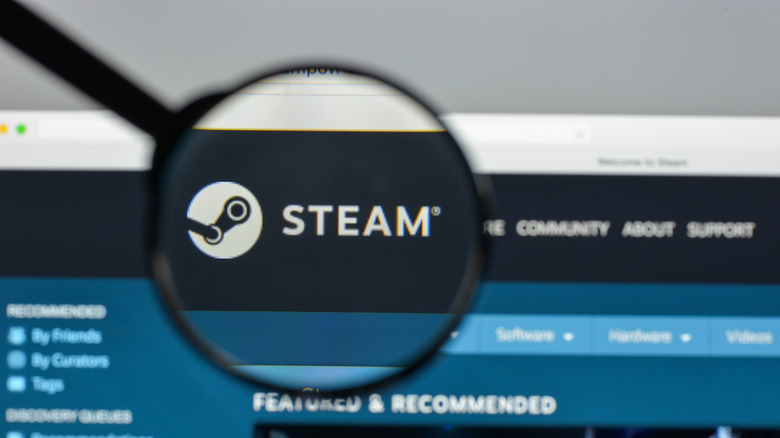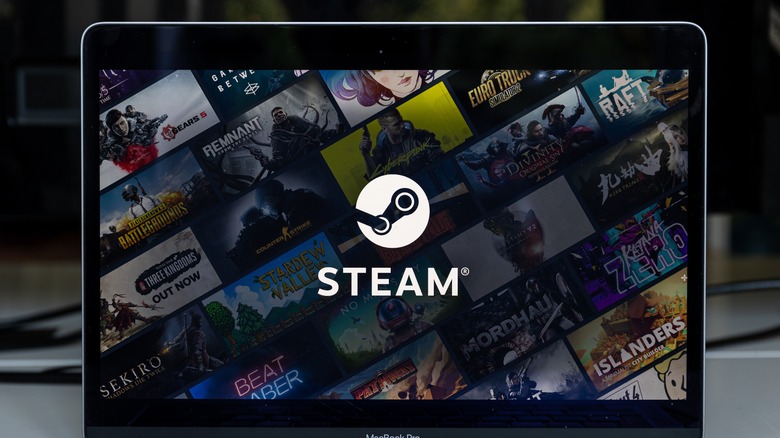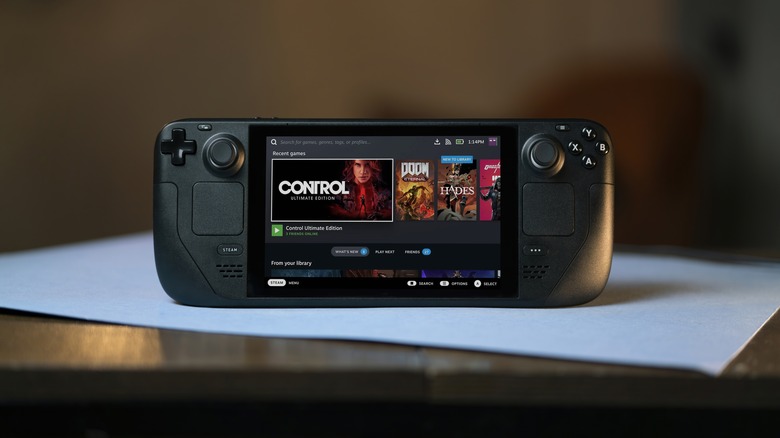Here's Why The Steam Machine Flopped
Before Valve released the Steam Deck, there was the Steam Machine. It was a gaming computer that was meant to provide those playing PC games with an experience similar to a console game. This was Valve's first step into the hardware market, keeping in mind the wants of the PC gaming community to create a highly customizable gaming experience. With Steam Machines, you could buy individual parts to build one to your own specifications, or you could purchase a pre-built one through a company such as Alienware.
What connected all Steam Machines was that they ran SteamOS, a Linux-based operating system that Valve created to run the games. They also came with a Steam controller, which could also work without a Steam Machine. In theory, this sounded like an endeavor that would make waves in the gaming world, and possibly give Sony and Microsoft a run for their money. However, in reality, things didn't turn out this way, and there was an interesting reason why, which came down to Valve's own decision-making.
Why SteamOS was the Steam Machine's downfall
Steam Machines first officially hit stores in November 2015, but just seven months later it had only sold less than half a million units (via Ars Technica). By the time 2018 came around, Valve removed the Steam Machine from its store. So what caused such a massive failure for this PC gaming machine? In the end, the main reason was the fact that they would only run using Linux. While there were still plenty of games that could run on the operating system, the vast majority of them would only run on Windows. Although Valve was trying to push for more Linux-based gaming, the support for it just wasn't there.
Valve's decision for this was due to its suspicion that Microsoft may have eventually overtaken the PC gaming market with its Windows Store. This store has strict guidelines on what can and can't be included in it, and Valve's CEO Gabe Newell had concerns about this model. He also had reservations about the number of customers Microsoft may have taken from Steam, as reported by Ars Technica. All in all, the move to Linux for PC gamers was something Newell very much wanted to encourage, which is why Valve stuck to the operating system for its Steam Machines. As a result, it alienated a large part of the market, and the pull for consumers to buy a Steam Machine was very weak.
The end of Steam Machines gives rise to the Steam Deck
Ever valiant in the face of failure, Valve has decided to continue in the hardware market with its newest device, the Steam Deck. In fact, if it weren't for the Steam Machine, this new console might never have been what it is. When Valve put out its Steam Link software, which is a program that allows you to use Steam across other devices, it also was imagining a way to integrate it into Steam controllers, as IGN reports. Valve's work on Steam Machines also gave it some guidelines for what not to do with a new piece of hardware. This experience made it easier for developers to work on new hardware, since many of the tasks they were working on, they had done before with Steam Machines.
So, thankfully, Steam Machines didn't result in a total loss for Valve. They gave the company invaluable experience that it could use to work on a better device and a roadmap through possible pitfalls of developing and distributing hardware.


